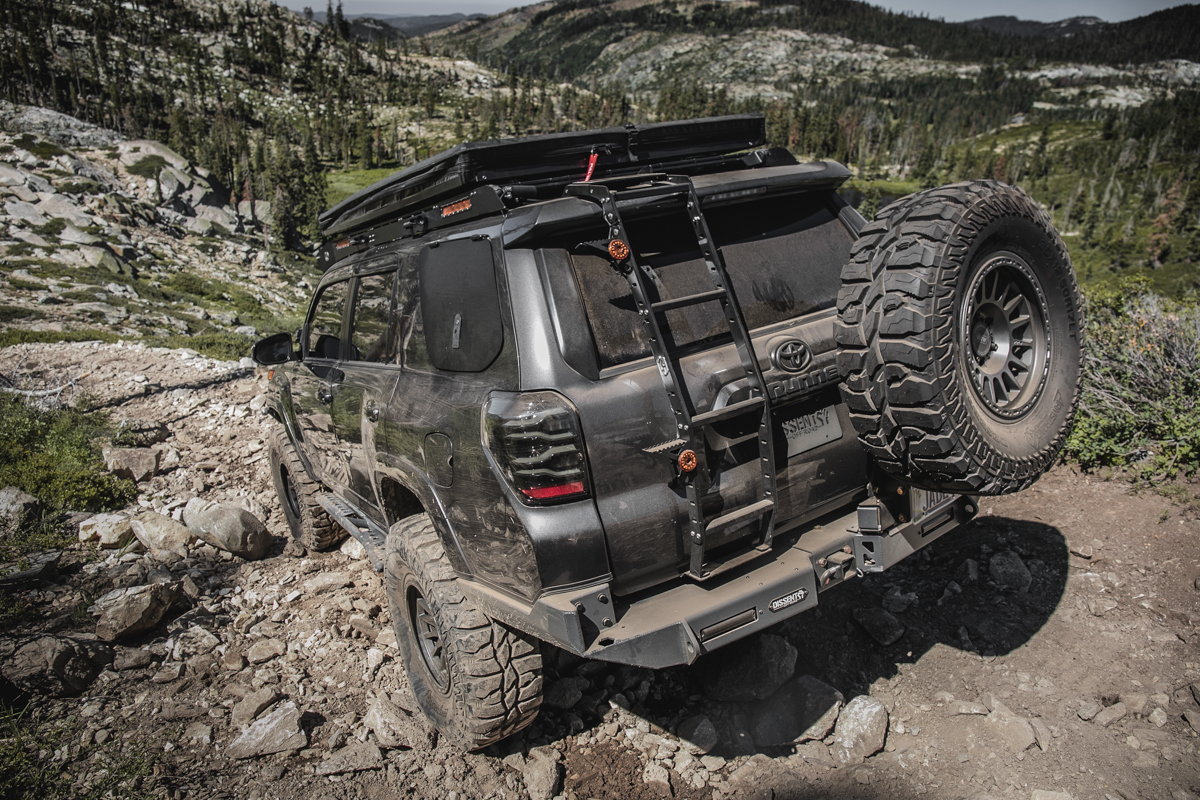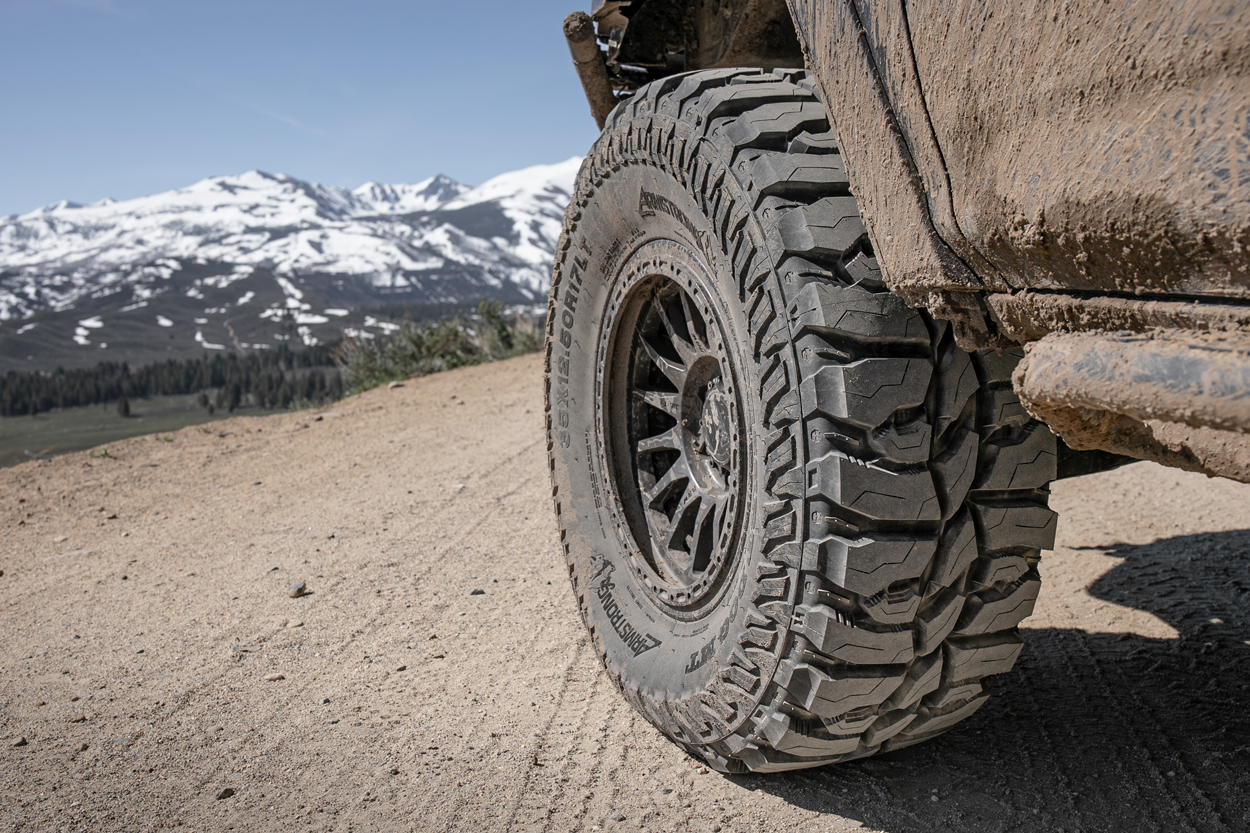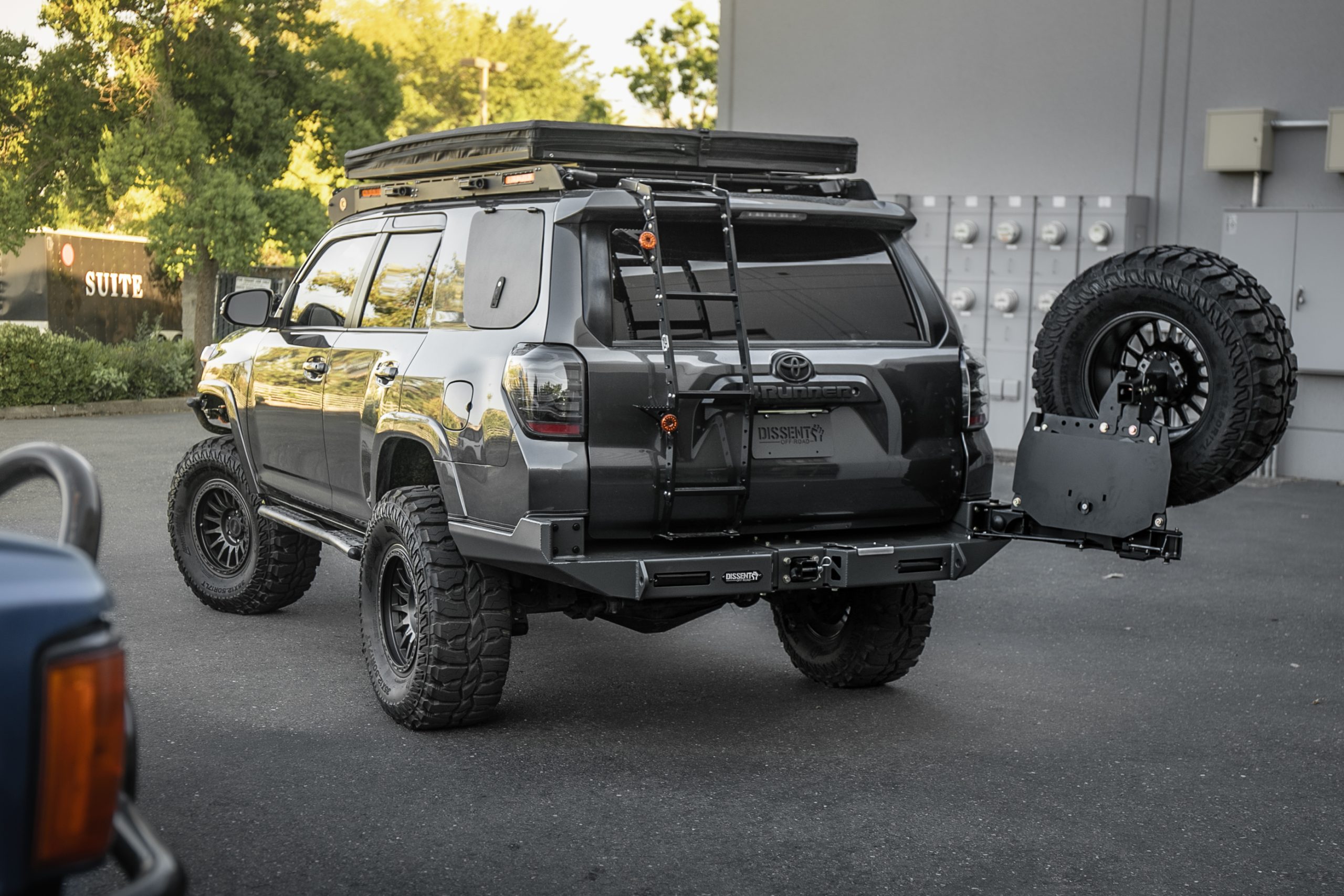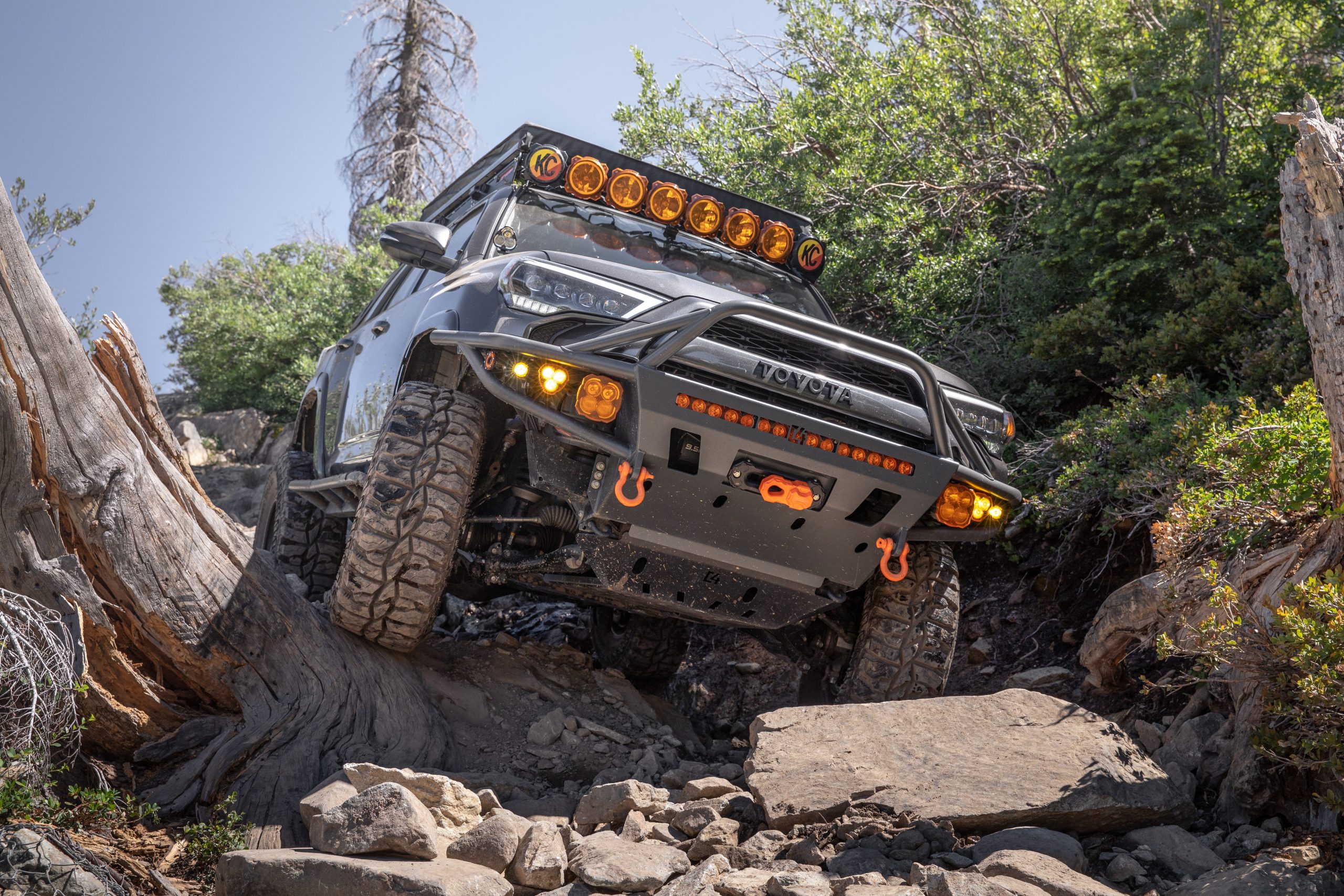
I recently had the opportunity to put the Armstrong Desert Dog MT tires to the test, and over the last 6000 miles, they have been pretty impressive.
I was skeptical of the Rhino Inspired tread pattern at first, but they have proven to be very impressive through many terrain types but more notably through wet, rocky, and muddy off-road conditions.
If you read the initial review posted here on Trail4Runner, then you got a good look at the details of the tire. This post is simply a follow-up to that highlighting how they have held up over the first 6000 miles based on my experience.
Quick Specs:
- Style: Mud Terrain
- Tread Style: Symmetrical
- Size: 35X12.5R17
- Load Range (E): 10PLY
- Weight: 76 lbs
- 6-year warranty and a 30-day money-back guarantee! See Warranty
Table Of Contents
Traction and Off-Road Performance

The Armstrong Desert Dog MTs continued to impress me on our last trip out to Gold Lake to Snake Lake loop through a gnarly descent into a narrow muddy rocky shoot.
Even when the Mickey Thompson Baja Boss MTs were losing traction down this section, the Desert Dog MTs held their grip and didn’t break traction once – and the Baja Boss MT is an impressive tire. These tires really do provide exceptional traction when off-road through muddy rocky sections.
I wheeled through rocky terrain, muddy trails, and sandy dunes out in the Moon Rocks area, and the tires consistently delivered reliable grip.
The aggressive tread pattern and sidewall design truly shined in challenging environments, allowing the 4Runner to confidently tackle steep inclines and intense descents.
Durability and Sidewall Strength

One of the key highlights of the initial review was the reinforced sidewall design. So how did it hold up?
These sidewalls feature a 3-ply polyester construction and proved their worth when aired down to 15 PSI as we pushed them through incredibly narrow trails with large boulders. I thought for sure one of the tires would pop a bead when bumping it through pinched sections while the low-pressure backed sidewalls were smashed hard against large rocks compounded by the weight of the 4Runner. To my surprise, they did just fine.
The last trail we hit at Gold Lakes is filled with jagged rocks and sharp debris. I didn’t experience any punctures or damage to the sidewalls. However, the edges of the lugs were showing slight signs of general wear once we got home. Not complaining after 6000 miles – just something to consider.
At the end of the day, the reinforced construction adds a layer of confidence on wet, muddy, rocky trails.
It’s important to note that this tire was designed for severe heavy loads. It’s a perfect tire for the Overland crowd seeing how so many of our builds are loaded down with so much weight. In addition to heavy overland rigs, any 4Runner that tows often while off-road and/or on-road would benefit from these as well.
I think the perfect fit for this tire is anyone with an overland build that’s towing a small camper trailer or anyone with a heavy rig in general.
On-Road Comfort and Noise

While it’s expected that mud-terrains are loud tires, I found the noise level of the Armstrong Desert Dog MT tires to be pretty well-mannered – comparatively speaking. I had about 5000 miles on my Toyo M/Ts before switching over to these Desert Dogs and although the two are comparable on-road in terms of handling and performance – the Desert Dogs are not as loud as the Toyos.
On highways and city streets (20-30mph), the noise is minimal, allowing for pretty mellow daily driving. However, when you jump on the freeway and push into the 70mph range, they start to howl a little bit, but again not as bad as the Toyos.
There is definitely an increase in noise compared to an all-terrain tire, but for an M/T, this tire does very well around town and on the freeway.
I have an overly built truck though and there are lots of noises on my 4Runner so I am only able to directly compare the road noise to the Toyo M/T at a glance from my builds perspective.
I think if road noise is your only concern, you should look at an all-terrain. If you’re ready to compromise some level of tire howl at high speeds, then you should consider this tire as a top contender among the mainstream competitors in its class given its price point.
Wet and Rainy Conditions

One important aspect in our initial review was the performance in wet conditions.
I encountered a few rainy days and even flash floods while out on Highway 395 in spring and found that the Desert Dog MT tires maintained great traction on wet roads. Granted they only had around 1500 miles on them at the time, but I was impressed at how they performed on wet surfaces.
I purposely tried to break them loose with TRAC on, and they would not break loose on wet pavement. Then I tried again with a heavy skinny pedal and TRAC off and was finally able to spin the truck around in a cul da sac. After trying to break them loose with TRAC on and being unsuccessful, I was very confident coming down wet grades over Highway 395.
I have not tried braking on these tires while downhill on snow, but if you air them down to 25-30 PSI and use your gears for braking instead of your brakes you should be fine.
Longevity and Wear

Although 6000 miles is relatively short for testing the “longevity” of a tire, I didn’t notice any significant signs of wear on Desert Dog. Nothing that was notable at least. There are no signs of feathering, cupping, cracking, or major cuts in the sidewalls.
The general wear seems to be nice and even all the way around, which I attribute to the general design and intended use of this tire. The tread is designed to last up to 50k-60k miles under extreme loads – whether you’re towing or if you’re running a heavy overland build.
Final Thoughts

The Armstrong Desert Dog MTs have continued to uphold their manufacture-quoted reputation so far as capable and durable mud-terrain.
Their functionality and performance through wet, muddy, rocky conditions are where they shine. Also, their long-term durability is quoted to be pretty impressive and after 6000 miles they aren’t showing any sign of imperfections or premature wear.
The 3-ply polyester sidewall combined with the tire compound’s ability to withstand extreme weight makes it a unique tire.
At the end of the day, the tire is designed for a heavy build that wheels hard often or a build that tows consistently through wet, muddy, rocky conditions.
I think they would be great for an overland rig that tows a teardrop trailer or something similar.
Also, it doesn’t hurt that the Desert Dogs run about $100 cheaper than most mainstream competitors!

I am really curious as to how these tires are wearing. Do you have any measurements? Are they still performing well and riding quieter than toyos?